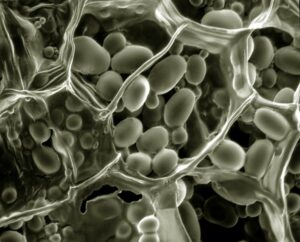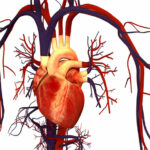STARCH LINGO: RAPIDLY DIGESTED STARCH, RESISTANT STARCH AND SLOWLY DIGESTED STARCH

Carbohydrates include the maltodextrins, starches and sugars that we are able to digest and absorb to provide our bodies with fuel such as glucose, plus dietary fibre that provides bulk for laxation and importantly is also a fuel for our gut microbiome. Starch is mostly found in traditional staple foods such as cereal grains, roots and tubers, legumes (beans, lentils and chickpeas), nuts and seeds, and the many ingredients made from these that are incorporated into our foods like breads, pasta’s, noodles, breakfast cereals, cakes, biscuits, crackers and savoury snacks (e.g., corn chips, potato crisps and pretzels to name but a few). As mentioned briefly in this month’s Food for Thought, starch can be classified into rapidly digestible starch (RDS), slowly digestible starch (SDS), and resistant starch (RS) to differentiate its digestion properties.
RDS, found in many highly-processed starchy foods, is as the name suggests, rapidly digested and absorbed in the upper small intestine leading to a rapid rise in blood glucose levels, and then a drop, as the pancreas secretes insulin into the blood stream to lower blood glucose levels as quickly as possible. Commonly consumed sources of RDS include:
- most highly processed breads, breakfast cereals and biscuits,
- boiled white rice, and
- potato products like instant potato and potato crisps.
RS is not digested in the small intestine, but its microbial fermentation in the large bowel (colon) produces short chain fatty acids that provide additional energy to the body along with a high proportion of butyrate that is beneficial to colonic health. Best sources include:
- wholegrain cereals, and
- legumes (beans, peas and lentils)
SDS, as an intermediate starch fraction between RDS and RS, is digested slowly throughout the entire length of the small intestine to provide sustained glucose release with a low initial rise in blood glucose levels and subsequently a slow and prolonged release of glucose and insulin. Commonly consumed sources of SDS include:
- pasta,
- nuts and seeds, and
- legumes
Needless to say, it’s wise to include more foods that are high in SDS and RS and less foods that are high in RDS in your habitual diet.
Read more:
- Englyst and Hudson. The classification and measurement of dietary carbohydrates. Food Chemistry, 1996
- Zhang and Hamaker. Slowly Digestible Starch: Concept, Mechanism, and Proposed Extended Glycemic Index. Critical Reviews in Food Science and Nutrition, 2009

Dr Alan Barclay, PhD, is a consultant dietitian and chef with a particular interest in carbohydrates and diabetes. He is author of Reversing Diabetes (Murdoch Books), and co-author of 30-plus scientific publications, The Good Carbs Cookbook (Murdoch Books), Managing Type 2 Diabetes (Hachette Australia) and The Ultimate Guide to Sugars and Sweeteners (The Experiment Publishing).
Contact: Follow him on Twitter, LinkedIn or check out his website.







